Description
- 12V 200 watt monocrystaline solar panel. Dimensions: 43.3 X 35 X 1.18 in
- Pre-drilled holes on the back of the panel allow for fast mounting and securing. Pre-drilled holes included for grounding. Perfect for non-permanent installations.
- High-performance Monocrystalline solar cells that offer higher efficiency up to 23% than Polycrystalline in bright weather conditions, it provides a long service life and is virtually maintenance-free.
- Can be affixed by adhesive,grommets or Velcro (with which you can easily attach or detach the panels).Can be installed without costly structural roof reinforcements
- Use for RV’s, cabins, sheds, remote locations, and other small power generation needs. Compatible with on-grid and off-grid systems.
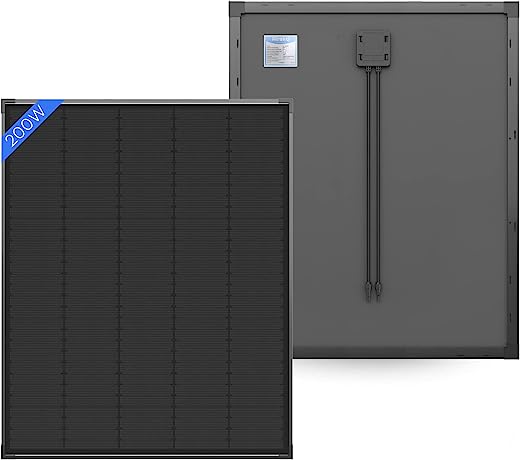
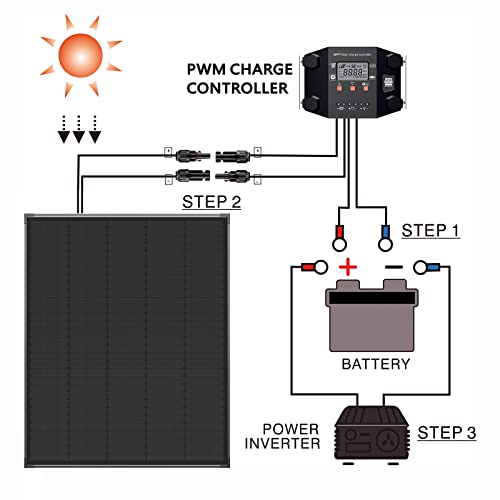
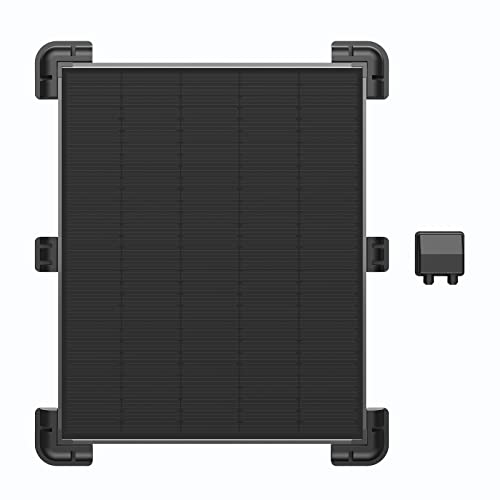

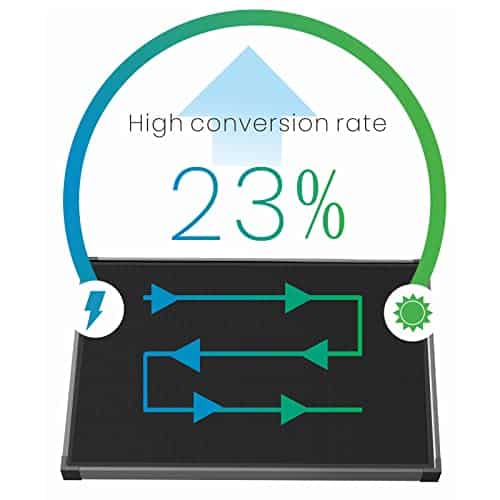
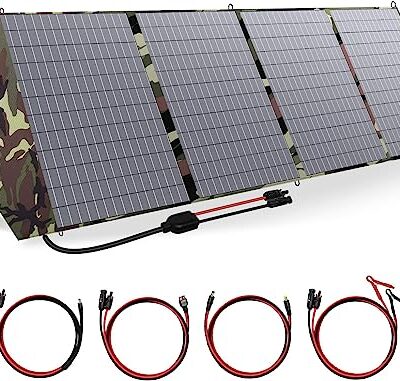
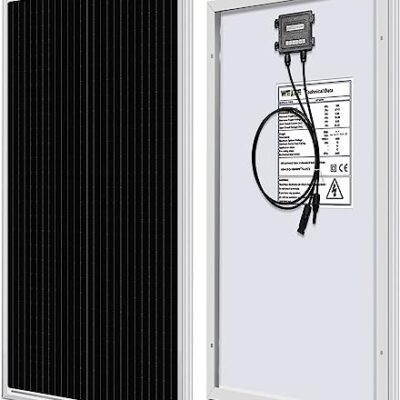
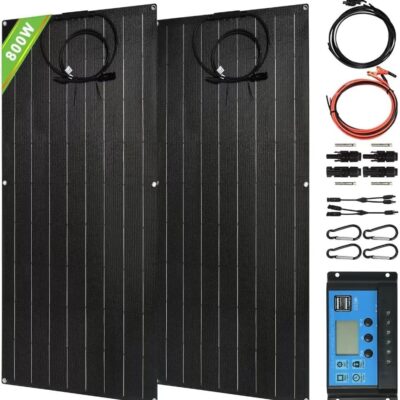
Sam Smith –
First, mine didn’t come with the “anti-transport collision angle” (the plastic corners) like shown. That is not a big deal for me. It was well packaged on the side and corners, with hard foam wrapped up two sides about 6 inches, although that still leaves the glass unprotected except by cardboard and dead space. It arrived intact and in good shape, nothing bent, nothing broken (surprisingly, Amazon delivered via the post office who kindly left it on the front porch). I’m comparing it to two of the Rich Solar 100 watt polycrystalline panels, since they are in the same price range, and I have some to compare it with. Basically side by side (flat on concrete, not ideal) each of the Rich Solar panels put out about 75 watts, and the Alrska puts out about 140 watts, so very close in performance. The Arlska uses significantly less space to put out *almost* the same power, so their claim of “up to 23%” performance seems true. It is certainly an attractive panel and priced right. I’ve included a picture of the panel spec sheet, since they don’t include specs in the listing (apparently they know little about solar panels, why else leave out the specs?)
Model AK-200-36M
Pmax 200w (maximum power)
Imp 10.7 amps (maximum power current)
Vmp 18.7v (maximum power voltage)
Voc 22.1v (open-circuit voltage)
Isc 11.34 amps (short-circuit current)
Dimensions 1100mm x 890mm x 30mm (the imperial measurements they give are close enough)
43.3 x 35 x 1.18 inches (oddly enough the data is available on their website, but not on Amazon, I looked)
Pretty good and cost effective panels, and seemingly lives up to the claim of increased efficiency (compared to others in their price class). The box on the back seems water tight enough, and the cables and connectors seem as good as any I’ve seen. These seems to be a pretty good deal to maximize solar in existing space. I included the specs on voltage and amperage, because you actually need those numbers to plan how to wire them so as not to blow out your solar charge controller. These are slightly lower voltage than most, but pretty decent especially when put in series. The 22.1v open circuit voltage means you can put 3 in series for the common (cheap) 80v MPPT controllers, or 4 in series for say a Victron 100v input. The 10 amp output current also works well for the branch connectors (to combine 2 strings) and common 12 or 10 gauge photovoltaic wiring (use 10 gauge pure copper, the extra price is worth it compared to the cheaper 12 gauge copper clad aluminum).
I ordered more (so that should answer your question of “should I buy these?”)
D / T K. –
All the panels I’ve tested produce more than rated.
JW –
I was excited to get 10 of these for my RV as the size / volts / amps would be perfect for my application.
However, the performance could be better. I suspect that it is due to how I will be using solar. Flat mounted on the roof of my RV. I got one of these to test. I expected to get well under the rated 200W but when was only seeing about half I was disappointed. Granted there are some very light clouds and it is laying flat. I tried tilting the panel up using the can trick (hide the shadow under the can to find the optimal angle) and was only about to get 130W. 120W out of a 200W panel laying flat in comparison to 82w out of a 100w panel (harbor freight). If I was getting 82% or anything close to that I would be happy. Looks like I need to go for the same panel type as the harbor freight for my project.
John E –
I have 3 of their 200 watt ‘square’ style panels – These work quite well for the price point. I generally am able to get between 150-185 watts consistently per panel. They are super light weight and very easy for bolt on or screw on installation. I’m currently using the 3 of them as ‘roofs’ between my enclosed AC / refuse station on the side of my home. They provide good sun cover and keep the AC compressor out of the sun while generating more power. I will be outfitting the entire roof of my other home with these panels in the near future.
Sam Smith –
I was pleasantly surprised by this little panel. I work in off-grid solar, and I have been looking for a set of all-black solar panels to put over the windows on my shuttle bus. These panels have the right style and shape I was looking for, but none of the reviews for the 100W panel showed real-world power output above 54W, which is pretty bad.
In the solar industry it’s common and expected that a 100W rated panel will never actually put out 100W in real world conditions. An output of 75-80% of the rated output is pretty normal for any given panel, but 54% of rated output is pretty bad. Still, I liked the look of these panels, and at $75 I figured I’d just buy one to test out, fully expecting that they would turn out to be mis-labeled 75 or 80W panels that would never put out more than 50 or 60W.
To my surprise, I found that I was able to get 81-84W when the panel was angled towards the sun, and about 50W when hanging totally vertical on the side of my bus, which far exceeded my expectations based on the reviews. To be fair, I am in Southern California in March, which is probably the best solar conditions you can get in the continental US, but still 84W out of a 100W rated panel is pretty good. The build is sturdy enough, and the all-black style makes it look like a much more expensive panel.
Something to note is that at 18.15V, the operating voltage of these panels is quite low compared to other 100W panels, which are usually in the 20-25V range. Many solar generators require more voltage than 18V to charge efficiently, so check the minimum input voltage on your charger before you buy – you maybe be better off with 2 of them in series to get a higher voltage. My solar generator (bluetti EB240) has a minimum input voltage of 16V, and it charges no problem with one of these panels.
The panel is quite vulnerable to shading, however, due in part to this low operating voltage. If even one corner of one cell is shaded, the output drops significantly. If even half of the bottom two cells are shaded, the voltage drops below 16V and it stops charging. This is common for a panel like this, but it’s something that’s worth noting. Don’t expect full output unless the panel is mounted in full unobstructed sun all day. Some higher-end panels, like the ones made by EcoFlow, have special cell architecture that makes them much more tolerant of partial shading, and will only lose power proportional to the area shaded, but they’re also a lot more expensive.
If you have a rack or AC unit on the roof of your vehicle that might shade any part of this panel over the course of day, even a little bit, it will greatly reduce your output, and you might want to consider a more shade tolerant panel. But if you don’t need partial shade resistance, then these are surprisingly decent panels for $0.75/ watt, and they look great.
John E –
pulled 320 watts out of a pair of 180s on a partly clouded day. I think they upgraded their packaging likely due to reviews here, but mine arrived pristine.